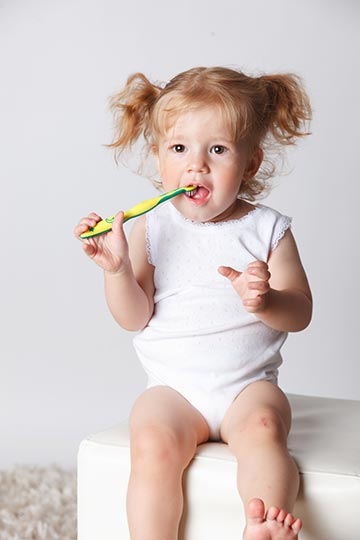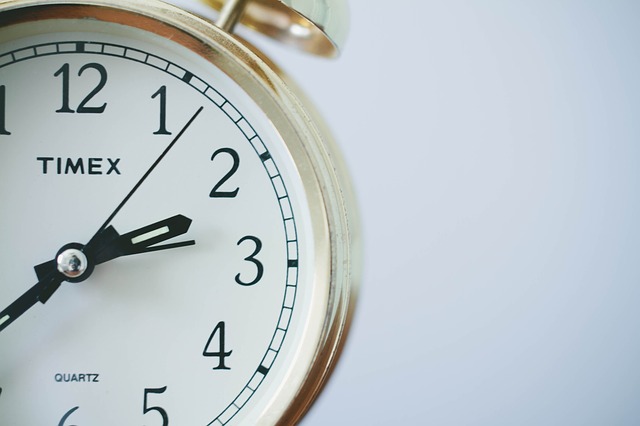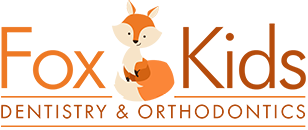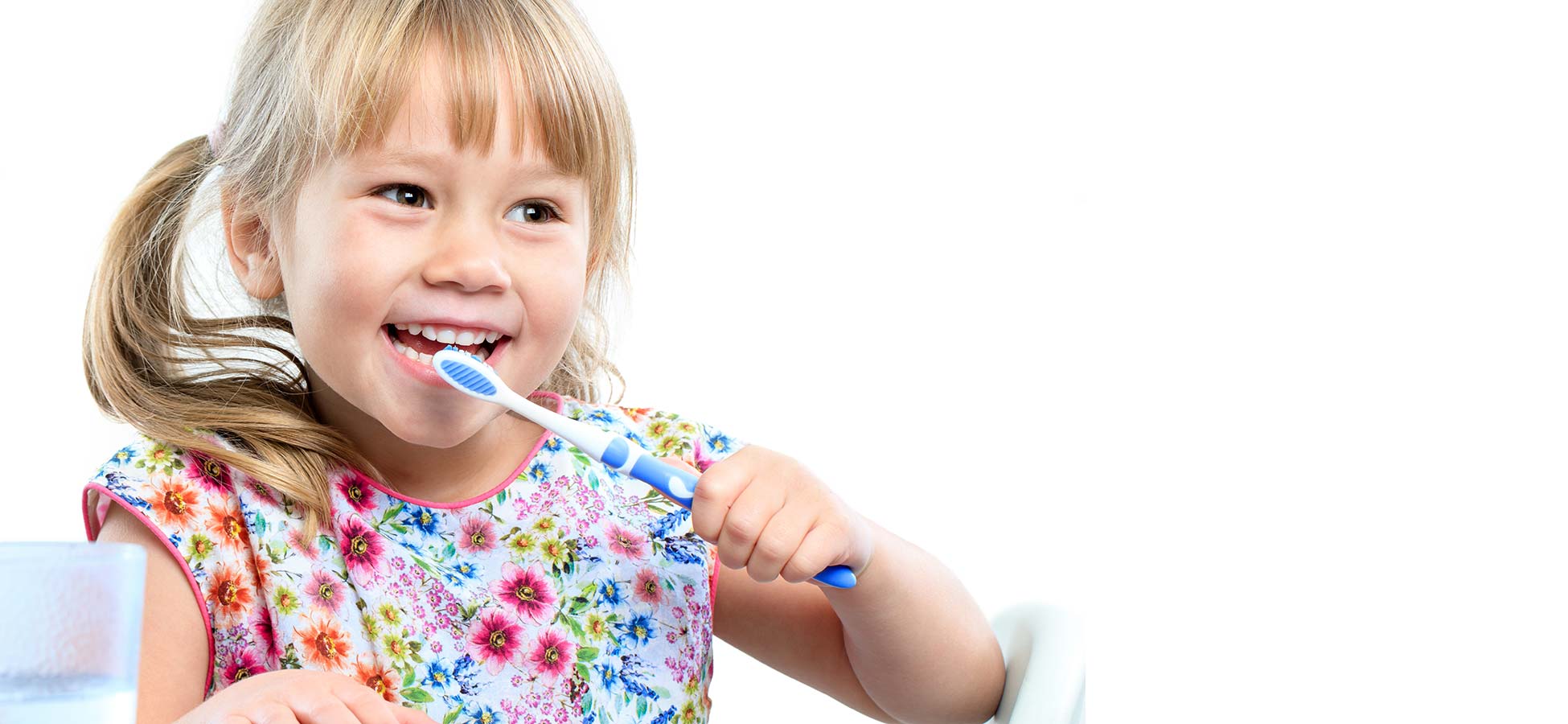Tips for Brushing Baby and Toddler Teeth
Helping your young ones at home brushing may be a challenge, but establishing good oral hygiene habits at a young age promotes long lasting benefits for your child’s oral and overall total body health.
You may have heard the term “gumline brushing,” but what’s the best way to achieve this on a wiggly little one? Before explaining good brushing techniques, it is important to pick out the right toothbrush and toothpaste for your child.
The Right Size Toothbrush
The grocery store dental aisle can be overwhelming with the abundance of oral hygiene products. When looking at picking the right toothbrush size, it is important to look at the size of the brush head and for the term “soft” bristles.
Small toothbrush heads fit and adapt better in a young child’s mouth, which help remove the sticky plaque and bacteria that adhere to teeth. Soft bristles are important due to the fact that stiff or hard bristles can cause damage to the gum tissue.
Lastly, picking a fun toothbrush with characters or exciting colors can make the brushing experience fun and keep the dental hygiene routine exciting. Another point to review is replacing your child’s toothbrush every three to four months, or if you notice that the bristles look worn and frayed.

It is also good to replace your child’s toothbrush with a new one if they have been sick with the cold or flu which helps to prevent re-introducing those bugs and germs.
The Big Take-Away:
- Small head with a soft bristle toothbrush that your child picks out to make their hygiene routine fun!
- Replacing the toothbrush every three-four months or after your child has been sick.
The Best Toothpaste for Young Kids
We recommend to start using a fluoride toothpaste once the first tooth erupts even if they are on a fluoride supplement. The topical benefit of the fluoride soaks into the outer layer of the tooth called enamel. This helps the teeth stay strong and fight cavities.
For babies and toddlers, you only need a rice-sized amount of toothpaste. This is a small amount, so if your little one swallows some of it, that’s okay! A good trick to helping prevent your child from swallowing the toothpaste is to smear it all around the teeth before you start brushing.
Just as a reminder:
- Children three and under: rice-sized amount of fluoride toothpaste
- 3-6 years of age: pea-sized amount of fluoride toothpaste
- Ages 6 and up: Use a little more then a pea-sized, a kidney bean sized of fluoride toothpaste, but use your own discretion.
Best Toothbrushing Techniques for Kids
“Gumline brushing” can be a hard concept to do on an active toddler who refuses to hold still and has strong lips! For infants we recommend the two-adult technique. This technique is also called a “knee to knee,” which may have been done at your child’s dental appointment.
Two-adult technique:
- To do this technique both adults will be sitting in chairs, on a bed, on the floor, or where ever it is most comfortable.
- Both adults should be facing each other with knees touching.
- The child should lay across both parents with his or her legs on one parent’s lap, and head on the other parent’s lap.
- The parent with the child’s head on their lap should be the brusher, while the parent with the child’s legs on their lap can help hold hands and comfort the child.
- Now this is where the gumline brushing comes into play! The brushing parent should use a non-dominant hand to lift your child’s lip and cheeks out of the way for better access and control, and angle the toothbrush towards the gums. The official technique for gumline brushing is a 45-degree angle towards the gums.
- The brushing parent should be able to see where the toothbrush bristles are touching by reflecting lips and cheeks. This allows for maximum efficiency!
One-adult technique:
- If only one adult is available to do the brushing, we have a few tricks that can help. Having your child lay down with their head in your lap is an easy way to still complete the “gumline brushing” technique.
Other important tricks for brushing:
- For smaller infants who only have a few front teeth, resting your non-dominant finger on the gum-pads in the back will help keep your child’s mouth open while brushing.
- Brushing the gum-pads for those little ones who don’t have all their teeth yet helps stimulate and promote healthy gum tissues.
- For infants who don’t have any teeth yet, it is still important to wipe their gums with a Xylitol Wipe or wet cloth.
How Long Should I Brush My Kid’s Teeth For?

We recommend brushing teeth for a solid 2 minutes.
Brushing for 2 minutes can seem like hours, especially with an active toddler. Establishing a fun routine such as singing the “ABCs” twice, or singing a song your child enjoys can make the time fly!
The reason we encourage 2-minute brushing is to ensure all spots are clean and establish a thorough routine early on.
When Is The Best Time to Brush Teeth?
Night-time is the most important time to brush due to all the plaque and bacteria that is accumulated throughout the day. But brushing both in the morning and at night is recommended. If morning brushing is not realistic, that’s okay!
We understand. This is why we recommend starting brushing habits early, do a good two-adult or one-adult brushing at night, then let your little one have the fun with the brushing in the morning.
Schedule Your Appointment
Do you or your child need an orthodontic evaluation? Call us at 503-223-5039 to schedule your visit to our downtown Portland location!



